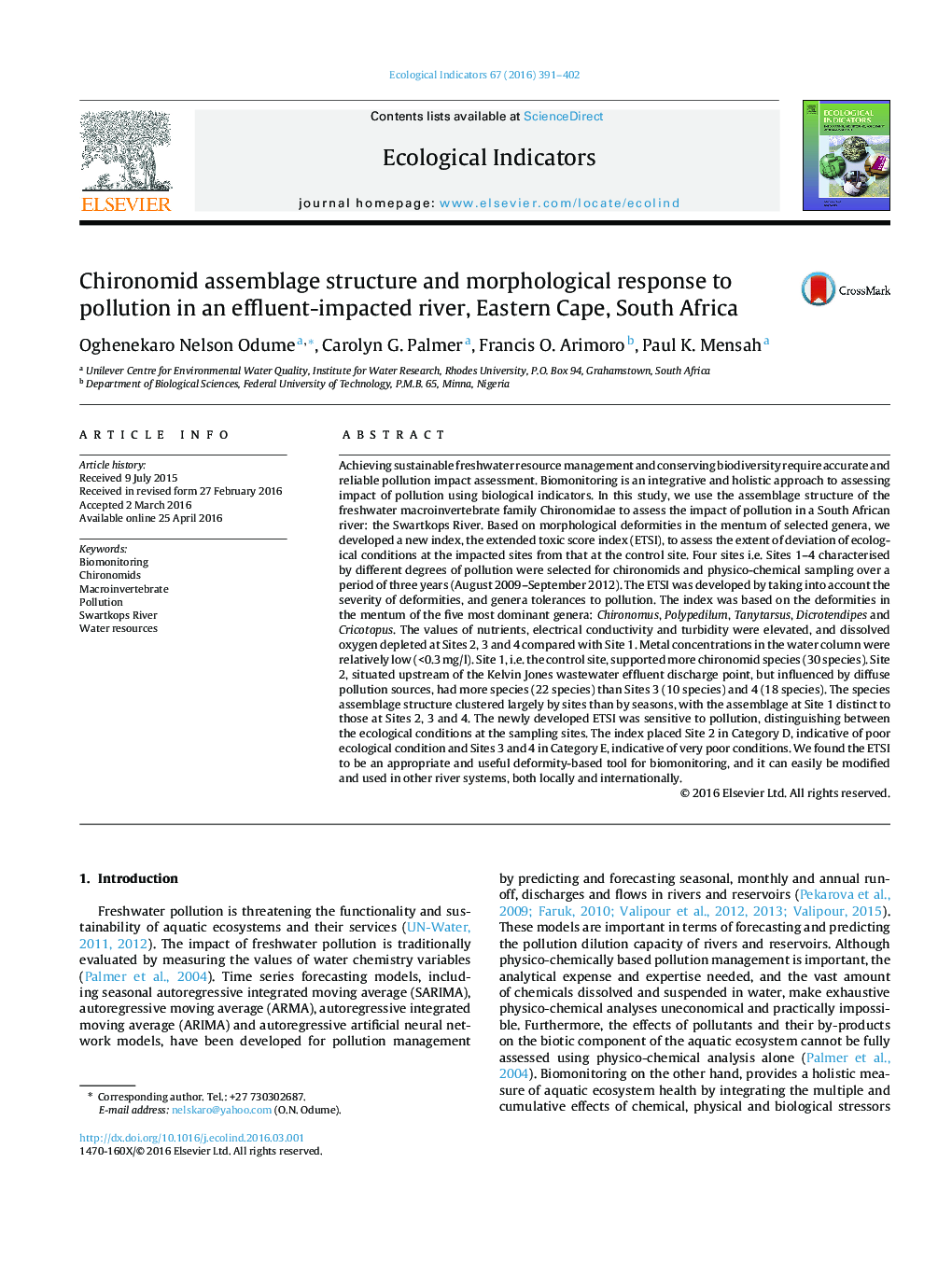| کد مقاله | کد نشریه | سال انتشار | مقاله انگلیسی | نسخه تمام متن |
|---|---|---|---|---|
| 4372886 | 1617135 | 2016 | 12 صفحه PDF | دانلود رایگان |
• A new deformity-based index was developed using an empirical approach.
• The newly developed deformity index proved useful for freshwater biomonitoring.
• Pollution negatively influenced chironomid species in the Swartkops River.
• A species assessment proved that chironomids are useful water quality indicators.
Achieving sustainable freshwater resource management and conserving biodiversity require accurate and reliable pollution impact assessment. Biomonitoring is an integrative and holistic approach to assessing impact of pollution using biological indicators. In this study, we use the assemblage structure of the freshwater macroinvertebrate family Chironomidae to assess the impact of pollution in a South African river: the Swartkops River. Based on morphological deformities in the mentum of selected genera, we developed a new index, the extended toxic score index (ETSI), to assess the extent of deviation of ecological conditions at the impacted sites from that at the control site. Four sites i.e. Sites 1–4 characterised by different degrees of pollution were selected for chironomids and physico-chemical sampling over a period of three years (August 2009–September 2012). The ETSI was developed by taking into account the severity of deformities, and genera tolerances to pollution. The index was based on the deformities in the mentum of the five most dominant genera: Chironomus, Polypedilum, Tanytarsus, Dicrotendipes and Cricotopus. The values of nutrients, electrical conductivity and turbidity were elevated, and dissolved oxygen depleted at Sites 2, 3 and 4 compared with Site 1. Metal concentrations in the water column were relatively low (<0.3 mg/l). Site 1, i.e. the control site, supported more chironomid species (30 species). Site 2, situated upstream of the Kelvin Jones wastewater effluent discharge point, but influenced by diffuse pollution sources, had more species (22 species) than Sites 3 (10 species) and 4 (18 species). The species assemblage structure clustered largely by sites than by seasons, with the assemblage at Site 1 distinct to those at Sites 2, 3 and 4. The newly developed ETSI was sensitive to pollution, distinguishing between the ecological conditions at the sampling sites. The index placed Site 2 in Category D, indicative of poor ecological condition and Sites 3 and 4 in Category E, indicative of very poor conditions. We found the ETSI to be an appropriate and useful deformity-based tool for biomonitoring, and it can easily be modified and used in other river systems, both locally and internationally.
Journal: Ecological Indicators - Volume 67, August 2016, Pages 391–402
